|
|
|
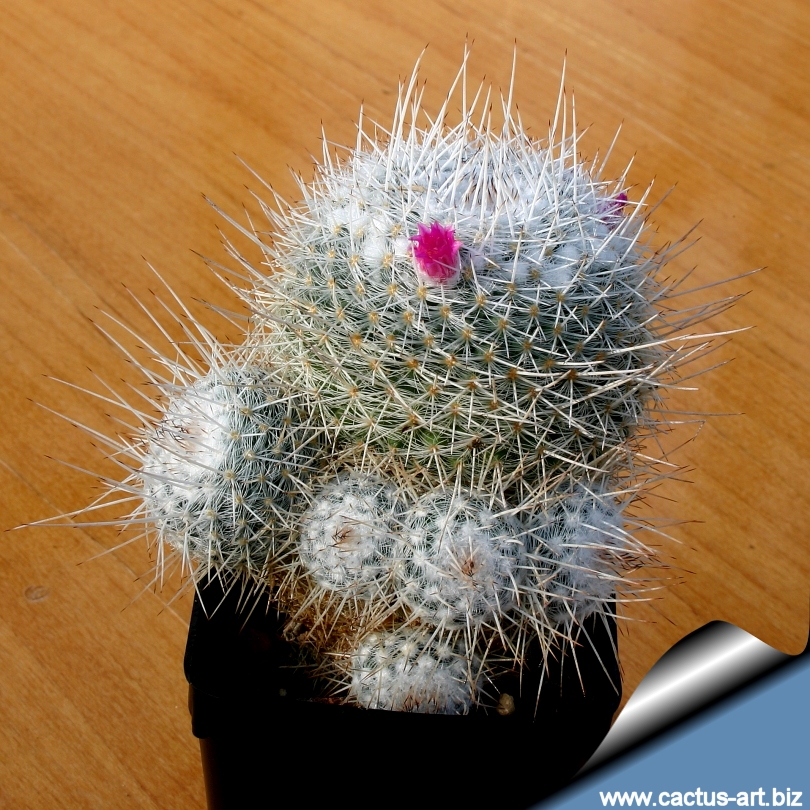
M. geminispina ( forma 'nobilis' ) has long flexible
spines that cover the new growth,
flowers are carmine in late spring and sometime in autumn too.
|
|
Description: It is a highly
variable densely spined species. Some cluster aggressively and form 30
to 90cm large clumps that appear white, while other seem to stay more solitary.
Stem: Short cylindrical, light green whit latex,
up to 18 cm high and 8 cm in diameter.
Tubercles: Rounded with latex.
Axil: With white wool and 10 -
20 long white bristles.
Spines: Spines are variable too, some plants have very short while others have
long spines.
Central spines: 2 (to 6) pure white or white with dark tip that protrude far out from the
rest, straight or slightly curved, 0,5 to 4 cm long (or more).
Radial spines: 16 to 20 chalky white, interlacing up to 7 mm long.
Flower: Campanulate, pinkish to carmine
red, with darker midveins, to 20 mm long and in diameter usually in a
ring in the growth of the previous year but sometime more randomly over
the body. If grown from seed,
M. geminispina can take seven to eight years before flowering.
Fruit: red
Seed: Brown.
|
|
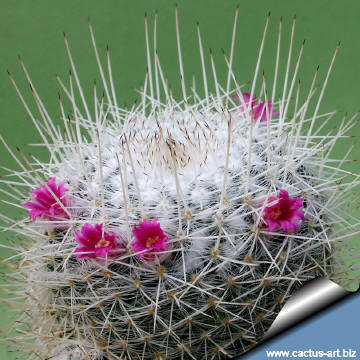
|
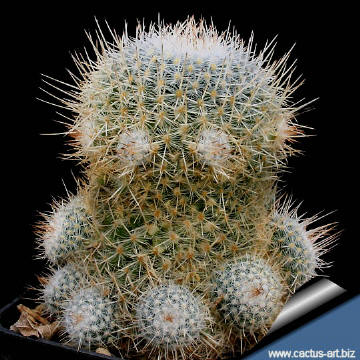 |
|
Some clones cluster aggressively and can form 50-90 cm wide white,
gorgeous mounds as they matures.
Cultivation: It is a fairly easy plant to grow,
don't requires any special treatment, but need as much light as possible
without burning the plant to encourage the heaviest spine formation, if kept too dark
it may become overly lush and greener and could be prone to rotting
due to over watering.
During the summer it is best to keep the
plants outside where the temperature can rise to over 30 C with no harm
to the plant. Furnish good drainage and use a an open and free draining
mineral compost that allows therefore roots to breath. They like only a
short winter's rest and should be kept almost completely dry during the
winter months, If the soil is allowed to be dry for too long root loss
could follow but equally the same result would occur if the plants are
both wet and cold. From March onwards the plant will begin to grow and
watering should be increased gradually until late May when the plant
should be in full growth.
Water regularly during the summer so long as the plant pot is allowed to
drain and not sit in a tray of water. During hot weather you may need to
water the plants more frequently so long as the plant is actively
growing. From late September watering should be reduced to force the
plant to go in to a state of semi dormancy, by October you should be
back in to the winter watering regime.
Feeding may not be necessary at all if the compost is fresh then, feed
in summer only if the plant hasn't been repotted recently. Do not feed
the plants from September onwards as this can cause lush growth which
can be fatal during the darker cold months. Grown
specimens resist to -4°C for a short time, but it is best to keep above
0° C to avoid ugly spots on the plant epidermis.
Propagation: Seeds or
by stem cuttings from adult plants.
Photo of conspecific taxa, varieties, forms and cultivars of
Mammillaria geminispina.
|
|


Advertising
|
|
|
|
|
Family:
Cactaceae
(Cactus
Family)
|
|
Scientific name:
Mammillaria geminispina
Haworth 1824
First description published in: Phil. Mag. 63:42 (1824)
Origin:
Hidalgo, Queretaro and San Luis Potosi, Mexico.
Altitude 1.000 - 1.850 m.
Conservation status: Listed in
CITES appendix 2.
Common English Names include: White cactus, twin spined
cactus, whitey.
|
|
Synonyms:
- Mammillaria geminispina
Hawort 1824
= Cactus geminispinus
= Neomammillaria geminispina
- Mammillaria elegans
A.P. De candolle 1828
= Cactus elegans
= Neomammillaria elegans
- Neomammillaria neo-elegans
Mammillaria leucocentra Berg 1840
Mammillaria geminispina subsp. leucocentra (Berg) D.R. Hunt
1997
- Mammillaria albata Reppenhagen
1987
|
|
|
|
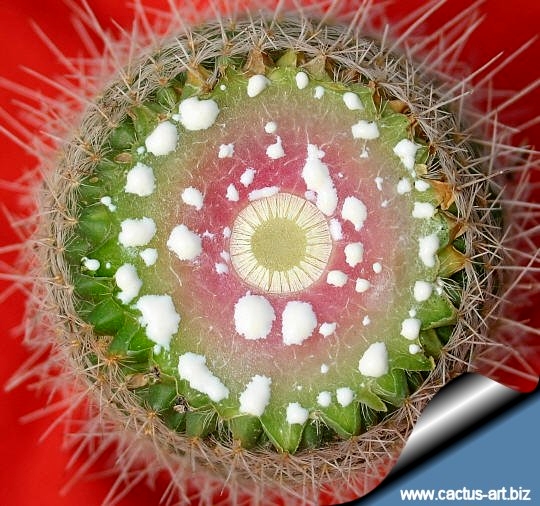
Latex from a
cross-sectioned plant.
Mammillaria elegans
A.P. de Candolle 1828. is a 'nomen
confusum' also applied to
Mammillaria haageana ssp elegans
and referes bolth to M. geminispina with latex in the stem
(Subgenus Mammillaria section Hydrochylus series supertextae ) and to M.
haageana, without latex in the stem ( Subgenus Mammillaria, section
Galactophylous, series Leucocephale )
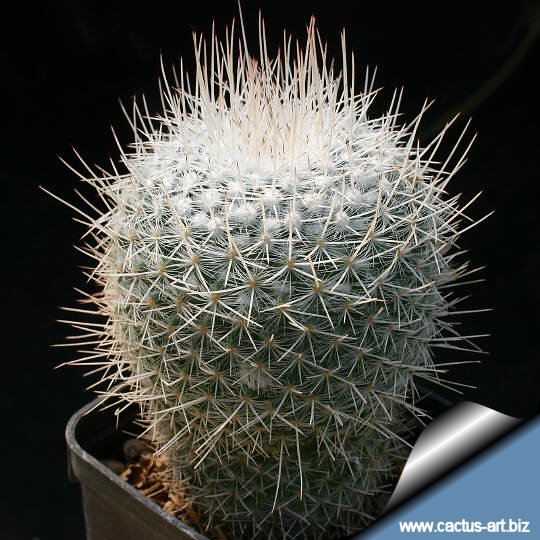
M. geminispina 'nobilis'
This Mammillaria gets only better looking with age.
It will continue to put on more and more heads, as well as more white
cotton topping.
The heads form mounds that seem stacked on top of each other.
M. geminispina is a very variable species and some of the
different growing forms has been for a long
time considered separate and distinguished variety, for example:
- M. geminispina var. geminispina
(form with 2 central, white with darker tipped spines)
- M. geminispina var brevispina
(form with 2 short darker tipped central spines)
- M. geminispina var leucocentra
(form with 5-6 pure white central spines)
- M. geminispina var nivea (form
with pure white spines)
- M. geminispina var nobilis (form
with long spines)
|
|